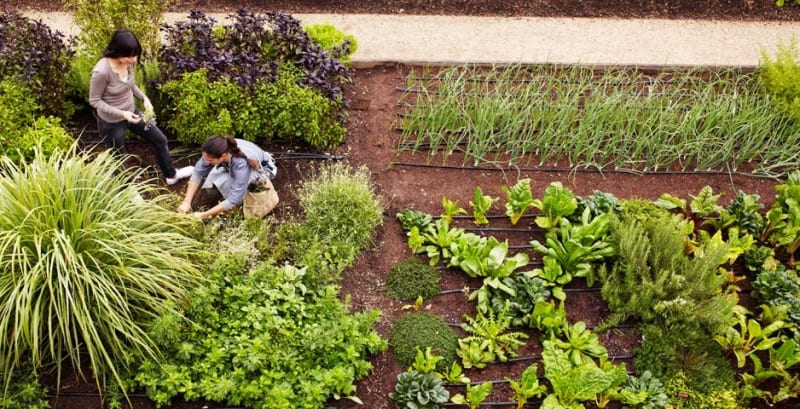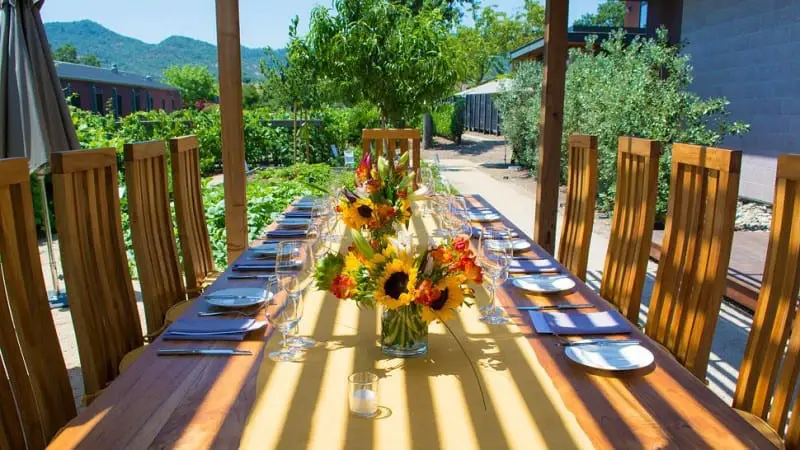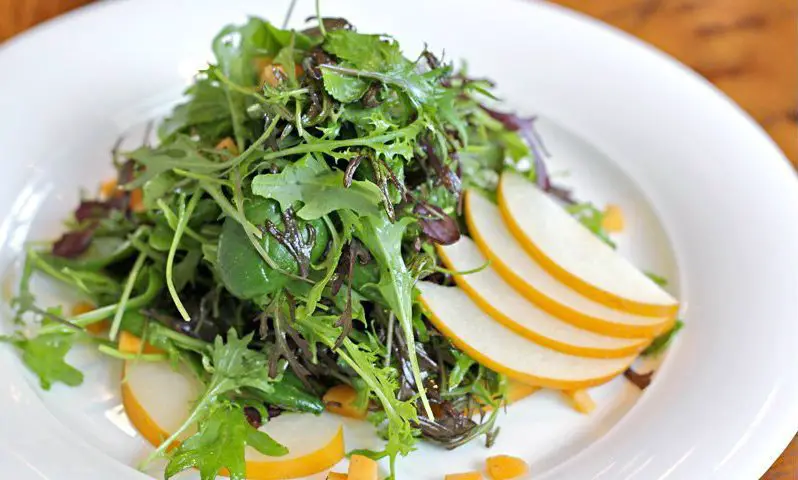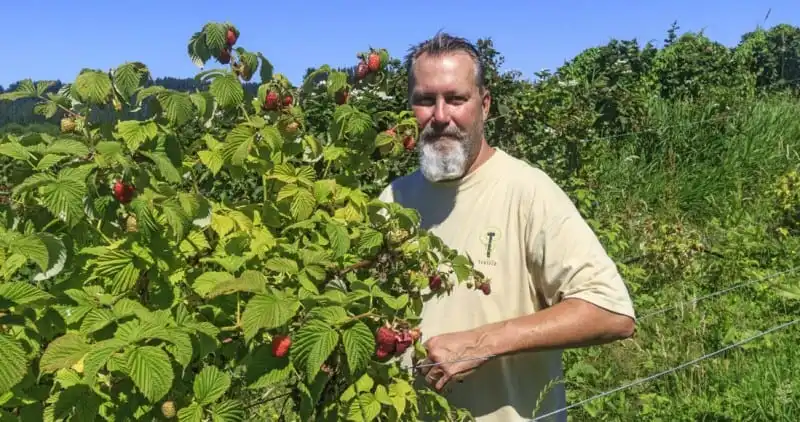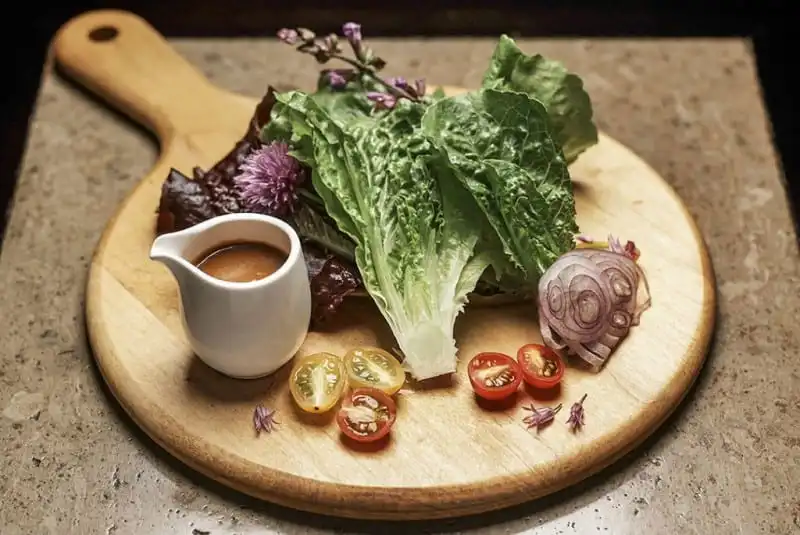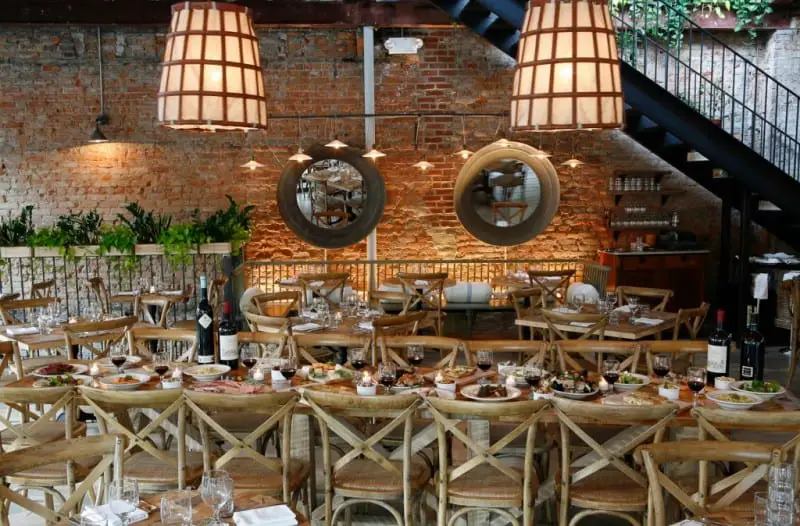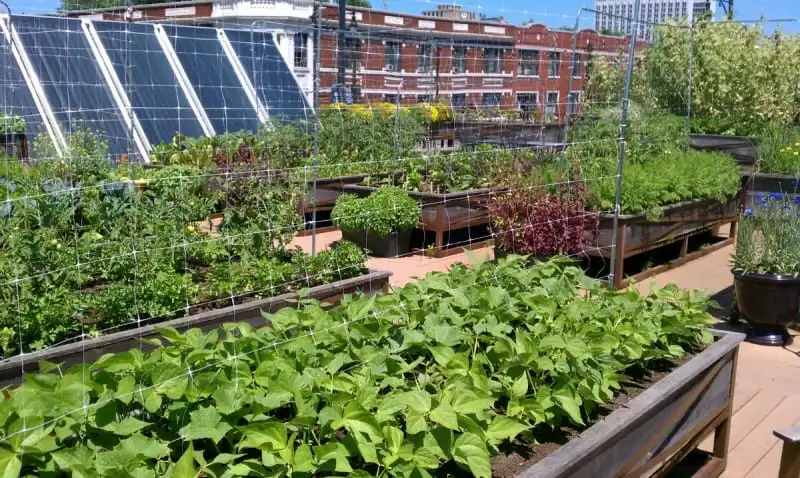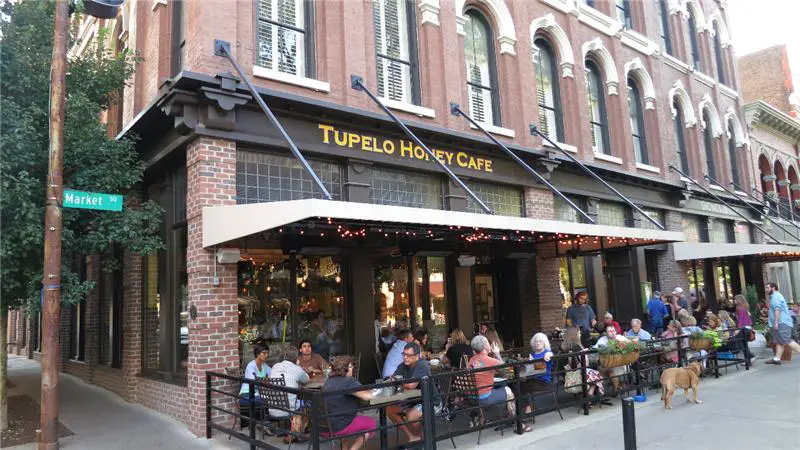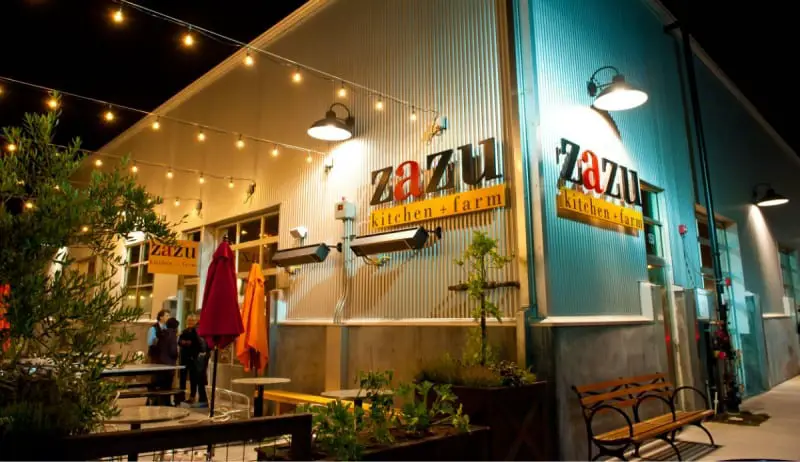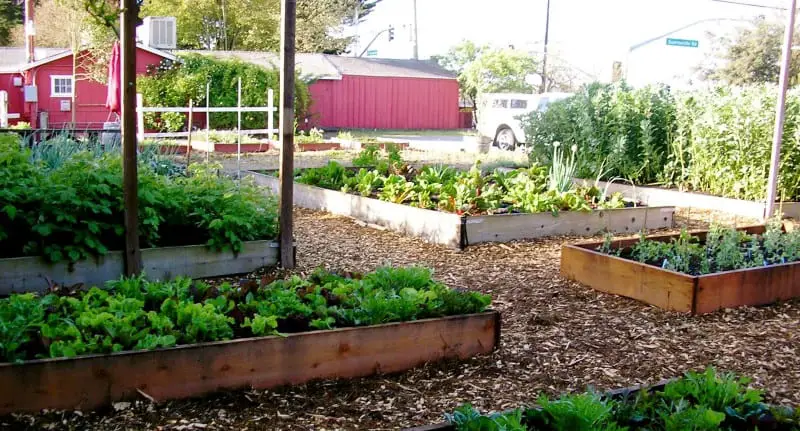Shandana A. Durrani has been a magazine editor and travel…
The slow food revolution has swept across the country. While restaurants in Europe and elsewhere have been utilizing locally sourced produce, meat and dairy for some time, Americans were slow to catch on. Thanks to activist chef Alice Waters and others, restaurateurs around the country are beginning to realize the benefits of buying locally, whether its to help local farmers and purveyors or to have fresher and more beneficial foodstuff. If you live near a large city, chances are, you’ve eaten at a farm-to-table restaurant.
Eateries such as the storied French Laundry in Yountville, California, have been slow-food meccas for years. But unlike many locavore restaurants around the country, French Laundry has a working herb garden onsite, allowing for the freshest ingredients possible with the least environmental impact. Is this why chef Thomas Keller’s cuisine gets the highest praise of any American restaurant? Probably not but it definitely helps boost the quality and taste of the food. Following French Laundry’s lead, a number of other fine dining establishments around the country have taken farm-to-table to the next level: either using existing parts of their properties to build herb and vegetable gardens or purchasing nearby farmland to grow produce and raise livestock. Here are six of our favorites from around the country:
Bardessono, Yountville, California
This eco-chic, boutique luxury hotel in California’s Napa Valley has earned accolades for its commitment to sustainability and the environment. Nowhere is this more apparent than in the hotel’s two gardens, one onsite and one a short distance away from the property. Lucy’s Garden is a small green space located on the south side of the property. Here, culinary gardener Noel Lopreore works her magic on two large and two small vegetable and herb beds. The garden is mainly used for herbs and root production but Lopreore grows 18 different varieties of basil as well. The garden is certified organic through the CCOF, making Bardessono the first hotel with that distinction.
Bardessono also leases a quarter acre of land from the Hill Family (the hotel shares farm usage with the nearby French Laundry). The Hill Family Farm has been certified organic for more than 20 years and Bardessono’s portion has two orchards at which peaches, nectarines and citrus fruits grow. The farm also boasts an 8000-square-foot mixed vegetable garden, a 30-year-old black mission fig tree, apple and pear trees and a mulberry tree. Lopreore operates a year-round greenhouse at which she cultivates many of the crops, some of which change season to season. In 2010, the hotel focused on 300 different types of tomatoes as well as black and white garbanzo beans, cucumbers, squash, sun chokes and three different types of corn.
“Through the gardens we lower emissions by not trucking in the amount of food we grow. We also compost our kitchen scraps and use these in our gardens which lowers the need for trash pickup and adding to the landfill,” says Lopeore. “Besides all the environmental benefits, it provides our chef with the unique opportunity of being able to request unusual items like the Bhut Jolokia, which we grow on site. The Bhut Jolokia is the hottest pepper in the world.” See our full review.
Trellis Restaurant, Kirkland, Washington
Guests dining on brook trout with grilled broccolini and oven-dried tomatoes at Trellis restaurant have enjoyed the eatery’s locally grown produce. The Kirkland, Washington, restaurant creates agrarian cuisine for what they dub “Wine Country-inspired dining.” The restaurant mixed modern cooking techniques and rich, rustic flavors to create innovative dishes.
The restaurant owns and operates a 10-acre farm in nearby Woodinville. The farm is salmon safe-certified and subscribes to organic growing methods, according to chef Brian Scheehser. The farm doesn’t raise livestock but grows Flemish pears, baby leeks, red onions, baby garlic, mixed greens, sage blossoms, chive blossoms, six varieties of apples, seven varieties of blueberries, and three varieties and blackberries as well as 30 varieties of tomatoes, among other fruits and vegetables.
“I have been farming years before Trellis and it’s incredibly rewarding to be able to share with dining guests the source of their meal,” Scheehser says. “Immersing myself in the earth has given me a unique understanding of a food’s inherent flavor and texture. The growing process amazes me, and I enjoy the art of coaxing out the earthy, natural attributes of fresh produce using the simplest culinary techniques.”
Although located in the Pacific Northwest, the farm is a year-round operation thanks to the four greenhouses on site.
Rosemary’s, New York, NY
Rosemary’s is an Italian restaurant with a rooftop farm situated in the heart of Greenwich Village. Created by Carlos Suarez, the owner of Bobo and Claudette, Rosemary’s is named after Suarez’s mother and is inspired by both her home in Lucca (Tuscany) and the rich heritage of the restaurant’s Greenwich Village corner.

Executive Chef Wade Moises serves seasonal Italian dishes that highlight the herbs and produce from the rooftop farm, as well as housemade pastas and a selection of focacce, as an homage to the location’s predeccessor, Sutter’s Bakery.
Uncommon Ground, Chicago, Il
Uncommon Ground lays claim to the first Certified Organic rooftop in the nation, which patrons can go up and visit. When dining there, I was pleasantly surprised at how much time their rooftop farmer spent giving me the grand tour of his elevated bounty and explaining the building process. The rooftop is fit with solar panels surrounded by manicured raised garden beds of herbs, tomatoes and more.
Obviously a rooftop can only supply so much for the restaurant, but the local concept goes beyond just their own building, to a commitment to source the majority of their food from local, sustainable organic producers – 24 percent of which comes from within 300 miles of the restaurant. Their menu is constantly changing according to the seasons, which makes each visit a unique experience that gives patrons a strong sense of time and place.
True midwesterners like myself can vouch for their hearty meatloaf, made with local grassfed beef and of course, wrapped in bacon and served with mashed potatoes, brussels sprouts, and fried nordic creamery cheese curds (a product commonly found amidst Chicago’s lively farmers markets). For dessert, I’d venture toward the seasonal crème brulee or s’mores tart.
They support the local economy by more than just helping out local farmers, but also local artisans, as you will regularly find local artist’s work featured inside and local musicians entertaining diners. See our full review.
Tupelo Honey Cafe, Asheville, North Carolina
Executive Chef/owner Briant T. Sonoskus isn’t new to organic farming. His grandparents had large gardens and stakes in community farms so the desire came naturally. “What I grow does vary a bit season to season. I have a large, fully automated greenhouse for winter growing but my production certainly goes down and is limited to a few cool weather crops. Making a menu item solely from my farm production is difficult but in partnering with other local farms you will see a lot of local combination effort items on menus or on the specials board,” says Sonoskus.
Sonoskus believes the benefits of having your own farm or garden outweigh the costs since customers are appreciative and return for the quality of the food. Growing large amounts of different items allow you to keep the costs down. See our full review.
Zazu Restaurant + Farm, Santa Rosa, California
Much of the farmland in California’s Sonoma county has been converted to wine growing since it’s profitable and attracts the tourists. Husband and wife team Duskie Estes and John Stewart believe in the diversity of agriculture. In 2001, the duo opened Zazu Restaurant, which is situated in an old chicken coop among dairy ranches and grapevines in Santa Rosa. They added the farm in 2005, when a gardener was hired to tend to the half acre of raised beds onsite. Estes and Stewart live on a three-acre estate 10 minutes from the restaurant at which they raise livestock such as chickens, goats, rabbits, turkeys, pigs and babydoll sheep. Macbryde Farm, named for their daughters, Brydie and Mackenzie, also houses a fruit orchard at which figs, Asian pears, apples, persimmons, pomegranates, olives, peaches, plums, cherries and Meyer lemons grow. The two pieces of farmland also provide the restaurants heirloom tomatoes, squash, pole beans, grapes, strawberries, fennel, kale and herbs such as lemon verbena, rose geranium and anise.
“A chef’s best playground is from ingredients picked when ripe, not picked for travel; a strong local economy depends not on monoculture, in case of bad grape years,” Estes says. “Ingredients picked just before service, never refrigerated, have a noticeable vibrancy. It is great for our cooks in terms of morale [being outside everyday instead of in a windowless kitchen] and understanding.”
Zazu educates consumers in various ways. The learn a bit about the garden at the bar before their meal. The restaurant also hosts a farmers market in the garden on Saturdays at which their farmer and chef is available to offer advice on produce and how to cook said produce.
—Shandana A. Durrani (Lesley Lamers also contributed)
If you’re a restaurateur and still skeptical about the cost benefits of growing your own produce, follow the advice of Bardessono’s culinary gardener Noel Lopeore:
* Grow what you can’t get in markets or what is very expensive in the marketplace. This will save you money because it’s always cheaper to buy a pack of seeds. Usually, you can buy carrots in bulk cheaper then you can grow them, so unless your focus is on the best carrot ever, buy it in the store, especially if you have a small area.
* Grow your herbs.
* Focus on what you do well and if you can’t grow a successful beet, then don’t. Let the farmers that specialize and dedicate their whole lives to lettuce grow lettuce and you grow something else.
* Feed your soil. Many people do not focus on the soil, but if you keep the soil healthy it will always give you healthy food that is more resistant to bugs and disease. This will prolong the life of your production. It may seem expensive to get a soil test and follow the recommendations of your lab, but it will be less money than losing your whole crop year after year or growing food that doesn’t taste right because you’re missing a key nutrient in your soil. Not to mention the depression the follows every failed crop.
* No chemicals! The food tastes terrible or completely lacks taste (and it’s not good for any of us).
* Focus on a few items instead of growing many different specialty items. You may find it’s fun to grow 30 different peppers, but if you only have room for 60 pepper plants than you are only getting a very small amount of each pepper. Instead grow 30 plants of one of your best peppers and 30 plants of your next best pepper.
* Let your guests in on the secret. Offer tours or classes if you’re comfortable doing so. Add in the garden to any of your local or repeat customer newsletters or emails. If you stay in contact with your guests, add garden notes, updates, fun blurbs, and/or tips whether it be your daily twitter, facebook, or monthly newsletter.
* Be patient and take the pace of nature.
—Noel Lopeore
Secret Gardens: 6 Great Farm-to-Table Restaurants was originally featured on GoodLife Report. Reprinted with permission.
Shandana A. Durrani has been a magazine editor and travel writer in New York City for 19 years. Her work has appeared in numerous publications and websites including Condé Nast Traveler, Glamour, Cigar Aficionado, Wine Spectator, Silverkris, Haute Living, NYMag.com, Jetsetter.com and Justluxe.com. She is the author of "Day Trips from New York City" and the co-author of "Insiders' Guide to New York City."


